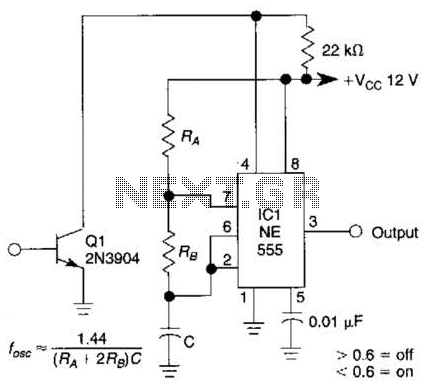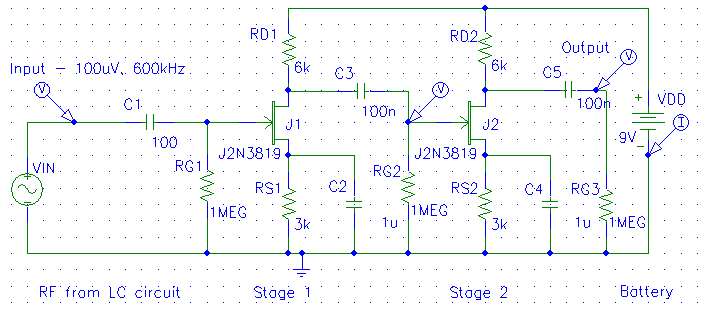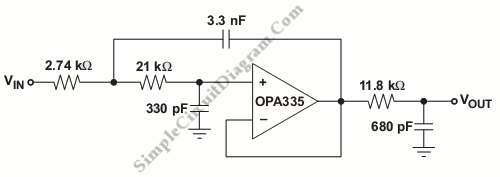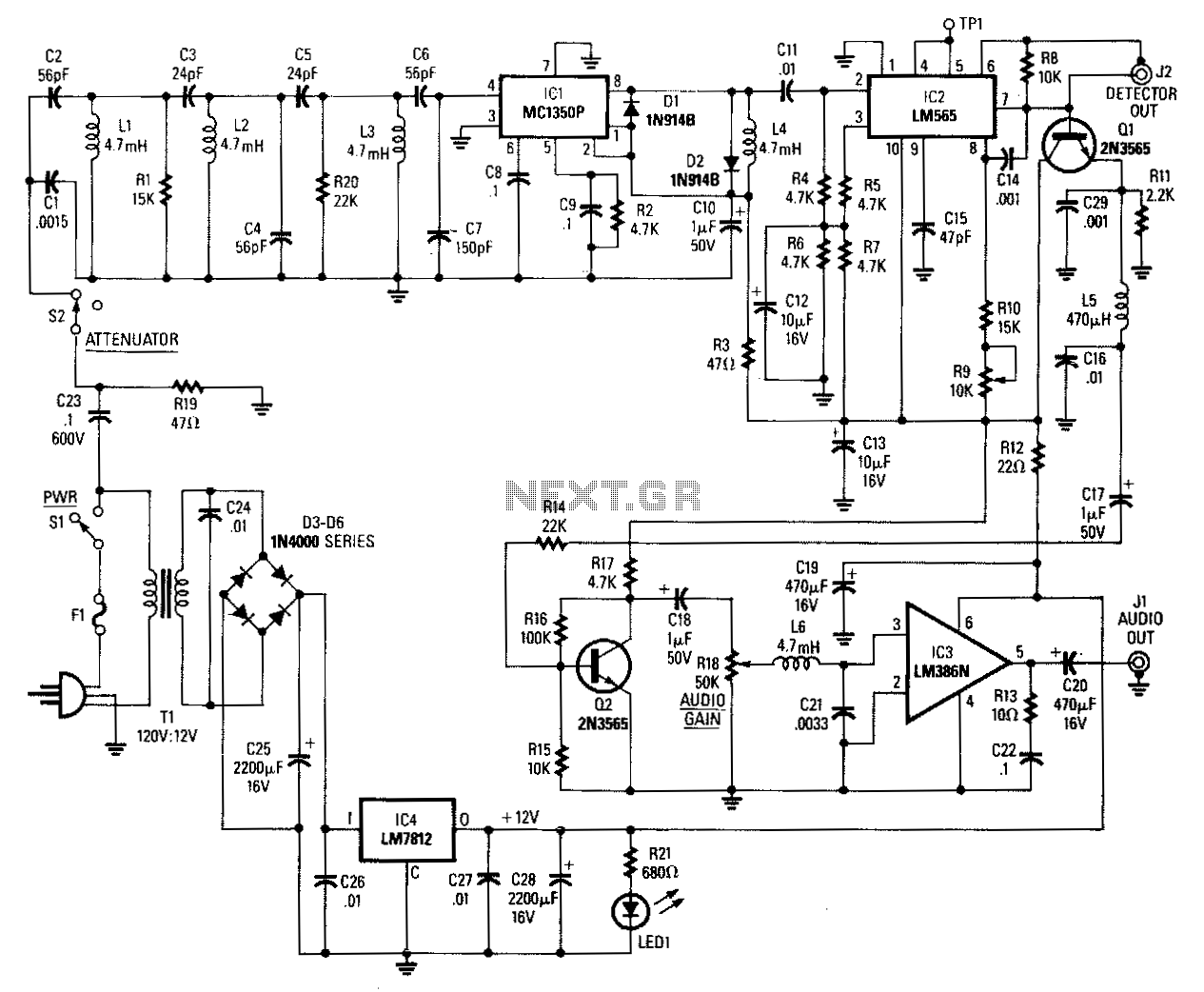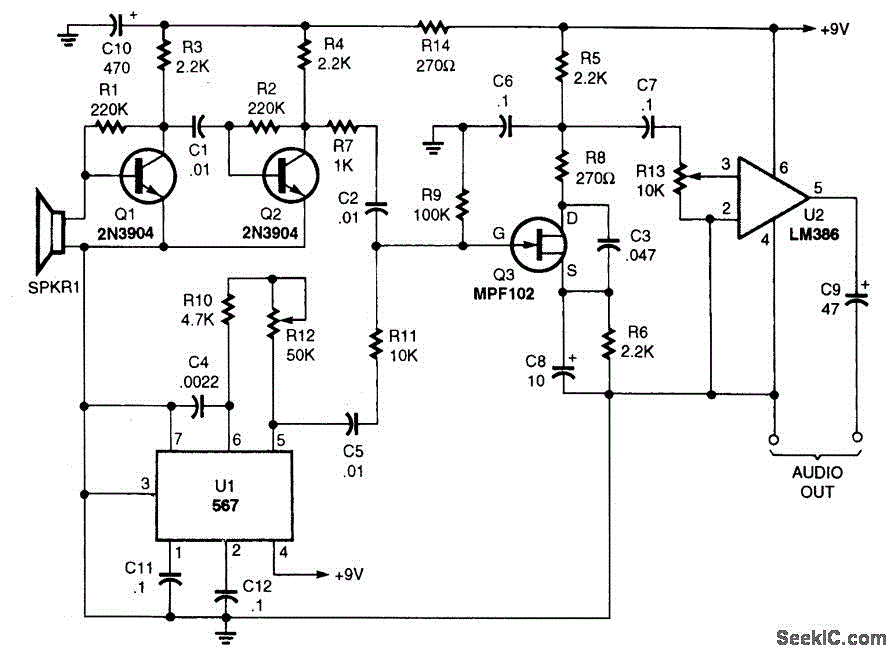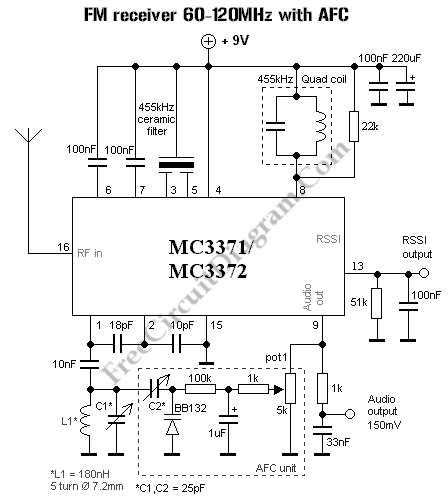
50 kHz FM Optical Receiver
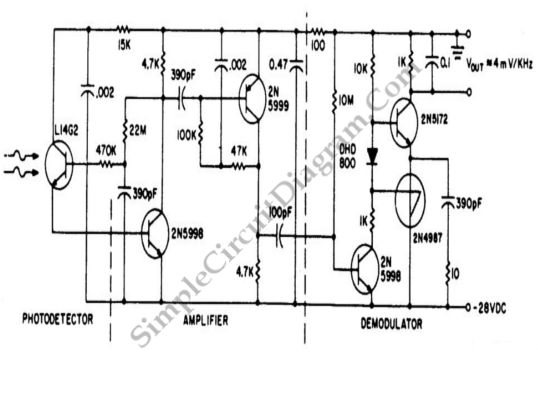
Frequency modulation (FM) can be used to transmit an analog voltage level signal with good noise immunity. The transmission itself might employ different techniques.
Frequency modulation (FM) is a method widely utilized in communication systems to encode information in a carrier wave by varying its frequency. This technique is particularly effective for transmitting analog signals due to its inherent noise immunity, which allows for clearer reception even in the presence of interference. In FM systems, the amplitude of the carrier wave remains constant while its frequency is altered in accordance with the input signal, resulting in a modulation that is less susceptible to amplitude noise.
In practical applications, FM transmission can be implemented using various techniques, including direct and indirect modulation methods. Direct FM modulation involves altering the frequency of the carrier wave directly in response to the instantaneous amplitude of the input signal. This can be achieved using voltage-controlled oscillators (VCOs) that adjust the frequency based on the input voltage levels.
Indirect FM modulation, on the other hand, typically involves phase modulation as an intermediate step, where the phase of the carrier wave is varied in response to the input signal. This phase-modulated signal is then converted to frequency modulation through a differentiator circuit. Both methods require careful design considerations to optimize bandwidth, signal-to-noise ratio, and overall system performance.
The FM transmission system also includes essential components such as filters, amplifiers, and antennas. Filters are used to eliminate unwanted frequencies and ensure that only the desired signal is transmitted. Amplifiers boost the signal strength to achieve longer transmission distances without significant loss of quality. Antennas are designed to efficiently radiate the modulated signal into the surrounding environment.
In summary, frequency modulation is a robust technique for transmitting analog signals, characterized by its resilience to noise and interference. The design of FM systems involves various modulation methods and essential components that collectively enhance signal integrity and transmission efficiency.Frequency modulation (FM) can be used to transmit analog voltage level signal with good noise immunity. The transmission itself might employs different.. 🔗 External reference
Frequency modulation (FM) is a method widely utilized in communication systems to encode information in a carrier wave by varying its frequency. This technique is particularly effective for transmitting analog signals due to its inherent noise immunity, which allows for clearer reception even in the presence of interference. In FM systems, the amplitude of the carrier wave remains constant while its frequency is altered in accordance with the input signal, resulting in a modulation that is less susceptible to amplitude noise.
In practical applications, FM transmission can be implemented using various techniques, including direct and indirect modulation methods. Direct FM modulation involves altering the frequency of the carrier wave directly in response to the instantaneous amplitude of the input signal. This can be achieved using voltage-controlled oscillators (VCOs) that adjust the frequency based on the input voltage levels.
Indirect FM modulation, on the other hand, typically involves phase modulation as an intermediate step, where the phase of the carrier wave is varied in response to the input signal. This phase-modulated signal is then converted to frequency modulation through a differentiator circuit. Both methods require careful design considerations to optimize bandwidth, signal-to-noise ratio, and overall system performance.
The FM transmission system also includes essential components such as filters, amplifiers, and antennas. Filters are used to eliminate unwanted frequencies and ensure that only the desired signal is transmitted. Amplifiers boost the signal strength to achieve longer transmission distances without significant loss of quality. Antennas are designed to efficiently radiate the modulated signal into the surrounding environment.
In summary, frequency modulation is a robust technique for transmitting analog signals, characterized by its resilience to noise and interference. The design of FM systems involves various modulation methods and essential components that collectively enhance signal integrity and transmission efficiency.Frequency modulation (FM) can be used to transmit analog voltage level signal with good noise immunity. The transmission itself might employs different.. 🔗 External reference
